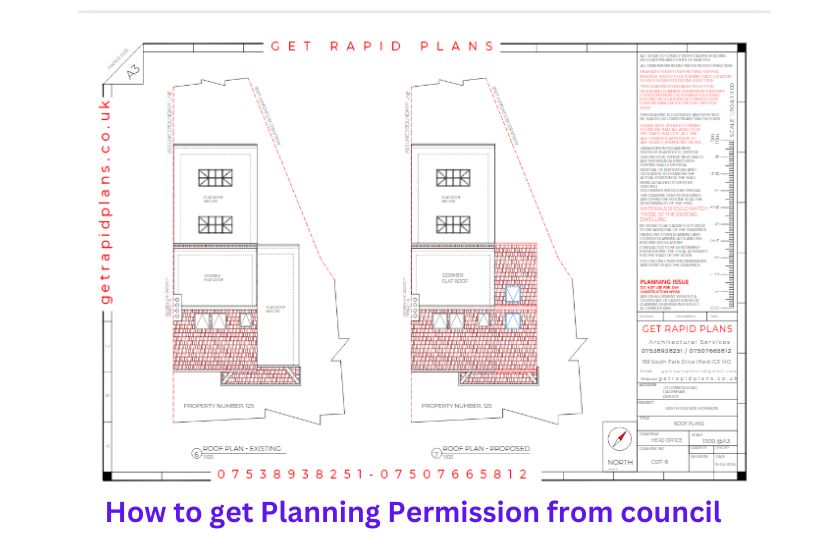Need Planning Permission? Here’s How
Planning permission is often required for home extensions, loft conversions, or building new structures. Navigating the process can be complex, but understanding the basics is key.

Do I Need Planning Permission?
Understanding Permitted Development Rights
Not every home improvement project requires planning permission. Many smaller alterations fall under what’s known as ‘permitted development rights’. This means you can carry out certain work without needing formal approval from your local council.
Common Permitted Development Rights
While specific rules can vary, common permitted development rights often include:
- Extensions: Building a single-storey rear extension, within certain size limits.
- Loft conversions: Converting your loft into habitable space, subject to conditions.
- Outbuildings: Constructing small outbuildings, like sheds or greenhouses, within specific parameters.
- Changes to windows and doors: Replacing or altering windows and doors, with some restrictions.
Checking Your Permitted Development Rights
To accurately determine if your project qualifies for permitted development, consider these options:
- Online Planning Portal: The Planning Portal offers a user-friendly tool to assess if your project requires planning permission. Simply input details about your property and proposed work.
- Contact Your Local Council: For complex or borderline cases, directly contacting your local council’s planning department is advisable. They can provide tailored guidance based on your specific circumstances.
Important Note: Even if your project falls within permitted development rights, it’s essential to comply with building regulations. These standards ensure the safety and structural integrity of your property.
The Planning Permission Process
If your project requires planning permission, follow these general steps:
1.Initial Consultation:
-
- Contact your local council’s planning department to discuss your plans.
- Seek advice on potential issues, necessary documentation, and the application process.
2.Prepare Your Application:
-
-
- Gather detailed plans and drawings of your proposed project.
- Complete the planning application form, available from your council or online.
-
Calculate and pay the application fee.
3.Submit Your Application:
-
-
-
- Submit your completed application and supporting documents to your local council.
-
-
The council will acknowledge receipt of your application.
4.Consultation and Decision:
-
-
-
-
- The council will consult with neighbours and other interested parties.
- Your application will be assessed against planning policies.
-
-
-
You will receive a decision within a specified timeframe (usually eight weeks).
5.Appeal:
-
-
-
-
-
- If your application is refused, you can appeal the decision.
-
-
-
-
Tips for Success
Navigating the planning permission process can be challenging, but these tips can significantly increase your chances of approval:
Early Engagement and Design Excellence
- Early Consultation: Establishing a positive relationship with your local planning department is crucial. Seeking pre-application advice can help identify potential issues early on and refine your proposals accordingly.
- Architectural Excellence: A well-designed project is more likely to gain approval. Invest in a skilled architect who can create a proposal that complements the local environment and addresses planning policies effectively.
- Understand Local Planning Policies: Familiarize yourself with your local planning authority’s policies and design guidelines. Demonstrating a clear understanding of these documents can strengthen your application.
Community Engagement and Sustainability
- Address Neighbor Concerns: Proactive engagement with neighbors can alleviate concerns and build support for your project. Consider hosting a consultation event to share your plans and address questions.
- Sustainability Focus: Incorporating sustainable features into your design can enhance your application. Consider elements like energy efficiency, renewable technologies, and low-impact materials.
- Heritage Sensitivity: If your project is in a conservation area or near listed buildings, demonstrate a careful approach to preserving the area’s character.
Detailed Documentation and Presentation
- Comprehensive Documentation: Prepare a clear and concise planning application, including detailed plans, drawings, and supporting documents. High-quality visuals can effectively communicate your design intent.
- Professional Presentation: A well-presented application reflects the quality of your project. Use clear and professional language, and ensure all documents are organized and easy to follow.
By following these tips, you can significantly improve your chances of obtaining planning permission and bringing your project to fruition.
